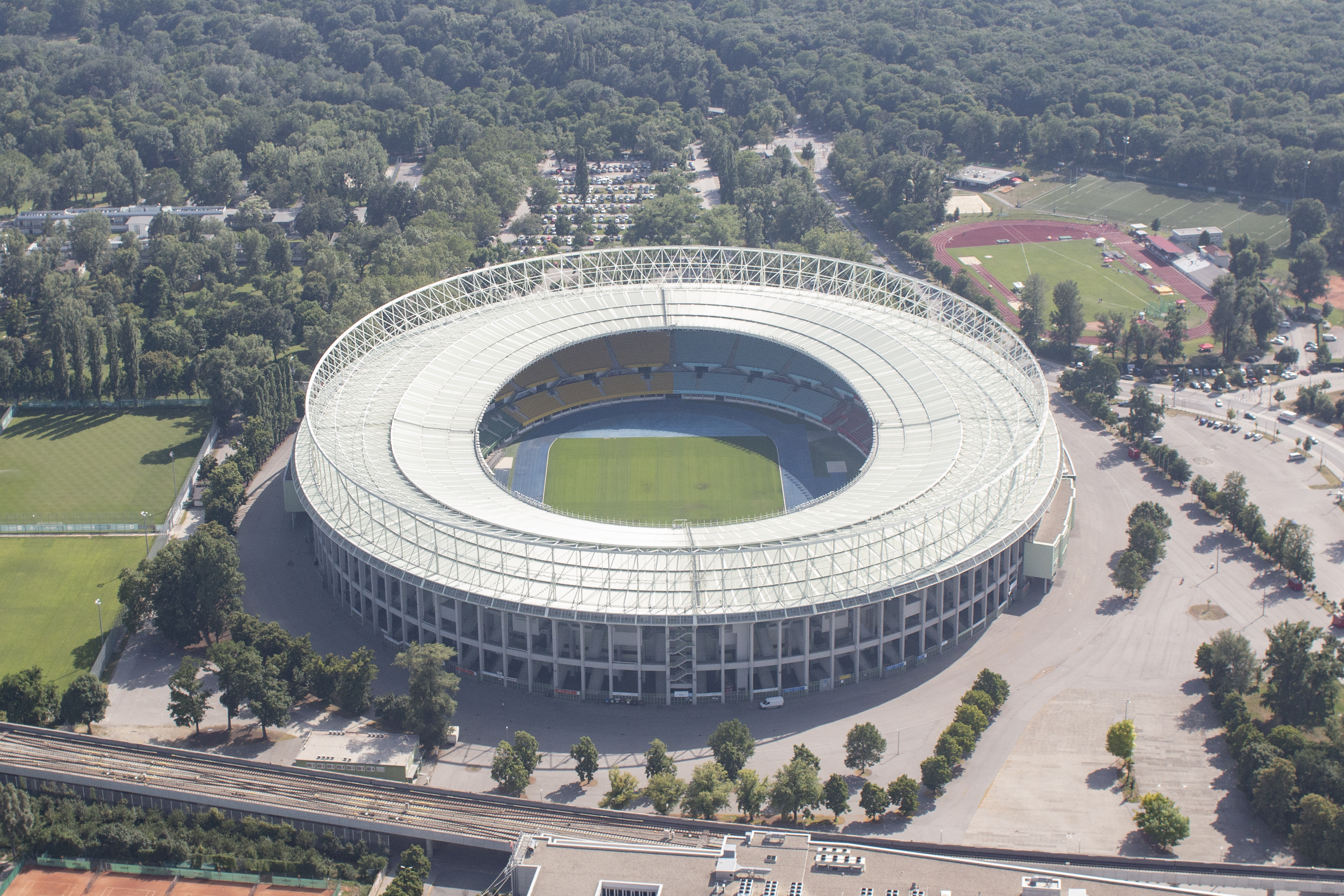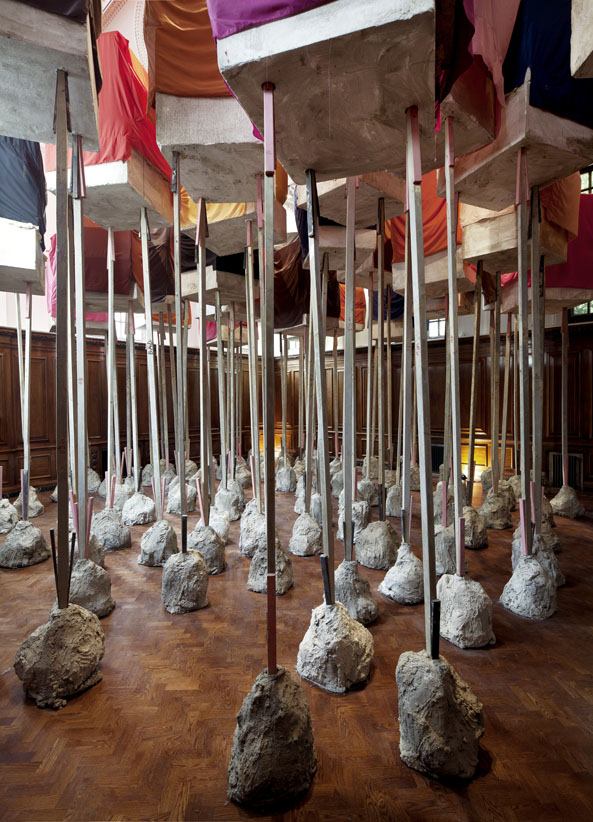|
Kunstverein Nürnberg
The Kunstverein Nürnberg (art association Nuremberg, official name "Kunstverein Nürnberg - Albrecht Dürer Gesellschaft e.V.") is a venue for exhibitions of contemporary art. The association was founded in 1792 and is Germany's oldest arts association. The association's exhibition space is situated in a building designed 1930 by architect Otto Ernst Schweizer, well known for buildings such as the Ernst-Happel-Stadion. The gallery shows a wide range of international contemporary artistic positions. Past exhibitions (selection): * 2015 ''Transparencies'' - Neil Beloufa, Juliette Blightman, Ryan Gander, Calla Henkel & Max Pitegoff, David Horvitz, Metahaven, Katja Novitskova and Yuri Pattison * 2011 Phyllida Barlow Dame Phyllida Barlow (born 4 April 1944) is a British artist. She studied at Chelsea College of Art (1960–63) and the Slade School of Art (1963–66). She joined the staff of the Slade in the late 1960s and taught there for more than forty y ... - Cast http:// ... [...More Info...] [...Related Items...] OR: [Wikipedia] [Google] [Baidu] |
Nuremberg
Nuremberg ( ; german: link=no, Nürnberg ; in the local East Franconian dialect: ''Nämberch'' ) is the second-largest city of the German state of Bavaria after its capital Munich, and its 518,370 (2019) inhabitants make it the 14th-largest city in Germany. On the Pegnitz River (from its confluence with the Rednitz in Fürth onwards: Regnitz, a tributary of the River Main) and the Rhine–Main–Danube Canal, it lies in the Bavarian administrative region of Middle Franconia, and is the largest city and the unofficial capital of Franconia. Nuremberg forms with the neighbouring cities of Fürth, Erlangen and Schwabach a continuous conurbation with a total population of 800,376 (2019), which is the heart of the urban area region with around 1.4 million inhabitants, while the larger Nuremberg Metropolitan Region has approximately 3.6 million inhabitants. The city lies about north of Munich. It is the largest city in the East Franconian dialect area (colloquially: "F ... [...More Info...] [...Related Items...] OR: [Wikipedia] [Google] [Baidu] |
Otto Ernst Schweizer
Otto Ernst Schweizer (27 April 1890 – 14 November 1965) was a German architect. His work was part of the architecture event in the art competition at the 1932 Summer Olympics The 1932 Summer Olympics (officially the Games of the X Olympiad and also known as Los Angeles 1932) were an international multi-sport event held from July 30 to August 14, 1932 in Los Angeles, California, United States. The Games were held duri .... References 1890 births 1965 deaths 20th-century German architects Olympic competitors in art competitions People from Schramberg {{Germany-architect-stub ... [...More Info...] [...Related Items...] OR: [Wikipedia] [Google] [Baidu] |
Ernst-Happel-Stadion
Ernst-Happel-Stadion (), known as Praterstadion until 1992, sometimes also called Wiener-Stadion, is a football stadium in Leopoldstadt, the 2nd district of Austria's capital Vienna. With 50,865 seats, it is the largest stadium in Austria. It was built between 1929 and 1931 for the second Workers' Olympiad to the design of German architect Otto Ernst Schweizer. The stadium was renamed in honour of Austrian footballer Ernst Happel following his death in 1992. The stadium hosted seven games in UEFA Euro 2008, including the final which saw Spain triumph over Germany. The stadium is owned by the City of Vienna (Municipal Department 51 – Sports of the City of Vienna). It is managed by the ''Wiener Stadthalle Betriebs und Veranstaltungsgesellschaft m.b.H.'', a subsidiary of ''Wien Holding''. It is a UEFA Category 4 stadium, and as such, it is the home of the Austria national football team. It also hosts the Viennese clubs' matches in UEFA competitions. The stadium is served by S ... [...More Info...] [...Related Items...] OR: [Wikipedia] [Google] [Baidu] |
Ryan Gander
Ryan Gander OBE Royal Academician, RA (born 1976) is a British artist. Gander is a wheelchair user who does not identify as being disabled. He explains: "I don't even feel disabled. I've spent my whole life trying not to be disabled, so I don't want to be labelled a "disabled artist." Since 2003, Gander has produced a body of artworks in different forms, ranging from sculpture, apparel, writing, architecture, painting, typefaces, publications, and performance. Additionally, Gander curates exhibitions, has worked as an educator at art institutions and universities, and has written and presented television programmes on and about contemporary art and culture for the BBC. Gander is typically described as a conceptual artist, but this is a term he has refuted, referring instead to himself as "a sort of neo-conceptualist, Proper-'Gander'-ist, amateur philosopher". He was elected Royal Academician in the category of sculpture. Gander's work has been displayed in several different cou ... [...More Info...] [...Related Items...] OR: [Wikipedia] [Google] [Baidu] |
David Horvitz
David Horvitz (born 1982) is an American artist who uses art books, photography, performance art, and mail art as media for his work. He is known for his work in the virtual sphere. Horvitz is a graduate from Bard College. Career Horvitz uses art books, photography, performance art, watercolor, and mail art as mediums for his work. The 1970s conceptual artist Bas Jan Ader has been an important influence on Horvitz's art. Horvitz's movie “Rarely Seen Bas Jan Ader Film”, for example, shows a silent black and white clip a few seconds long of a man riding a bicycle into the sea. This evokes the imagery of Ader's works around the theme of falling and the myth surrounding Ader's disappearance at sea. Horvitz's book “Sad, Depressed People” relates back to Ader's movie “I'm too sad to tell you” in that all of the stock images Horvitz collected show people with their heads in their hands, as does Ader. Another influence on Horvitz's work is On Kawara. As David put it ... [...More Info...] [...Related Items...] OR: [Wikipedia] [Google] [Baidu] |
Katja Novitskova
Katja Novitskova (born 1984 in Tallinn, Estonia) is an Estonian installation artist. She lives and works in Amsterdam and Berlin. Her work focuses on issues of technology, evolutionary processes, digital imagery and corporate aesthetics. Novitskova is interested in investigating how, "media actively redefines the world and culture, and everything" related to art, nature and commerce. Education Novitskova holds degrees in Semiotics and Cultural Studies as well as a specialization in Media Arts from the University of Tartu, Estonia. She also completed a Masters of Science in Digital Media, University of Lübeck, Germany in addition to studying at the Graphic Design department at the Sandberg Instituut, Amsterdam. Further funding and research for her artistic practice has been supported by the Prins Bernhard Cultuurfonds, the residency programme for visual artists at the Rijksakademie van beeldende kunsten and the Mondriaan Fund. Work Novitskova has shown at SALTS, Basel, Bard Ce ... [...More Info...] [...Related Items...] OR: [Wikipedia] [Google] [Baidu] |
Phyllida Barlow
Dame Phyllida Barlow (born 4 April 1944) is a British artist. She studied at Chelsea College of Art (1960–63) and the Slade School of Art (1963–66). She joined the staff of the Slade in the late 1960s and taught there for more than forty years. She retired in 2009 and is thus an emeritus, emerita professor of fine art. She has had an important influence on younger generations of artists; at the Slade her students included Rachel Whiteread and Angela de la Cruz. In 2017 she represented Great Britain at the Venice Biennale. Early life and education Although born in Newcastle upon Tyne, England in 1944 (as her psychiatrist father Erasmus Darwin Barlow, a great-grandson of Charles Darwin, was stationed there at the time), Barlow was brought up in a London recovering from the World War II, Second World War. She studied at Chelsea College of Art (1960–63) under the tutelage of George Fullard who was to influence Barlow's perception of what sculpture can be. "Fullard, among ot ... [...More Info...] [...Related Items...] OR: [Wikipedia] [Google] [Baidu] |
Shahryar Nashat
Shahriyar ( fa, شهریار), also spelled as ''Sharyar, Sheryar'', ''Shariyar'', ''Shahryar'', ''Schahryar'', ''Shahriar'', ''Shariar'', ''Sheharyar'', ''Shaheryar'', ''Shaharyar'', ''Shehreyar'', or ''Shehiryar,'' and pronounced /sha ree YAAR/, is originally a Persian name used as one of highest titles of nobility, which is equal to 'King' or 'Grand Duke'. In fact, Shahryar consists of two words, 'Shahr' (city) and 'Yar/Yār' (friend), leading the name to be sometimes translated as "the city of friend". Therefore, the name may have two meanings in the Persian language. For example, here are some lines of Persian poetry: Ferdowsi: The king told the Iranian people () The bad time has passed () Hafez: This land was the city of friends and the origin of kind people () What happened to the kings and kindness? () Geography * Shahriar, a city in Tehran Province, Iran * Shahriar County, a county in Tehran Province * Shahriar, Chaharmahal and Bakhtiari, a village in Chaharmahal and ... [...More Info...] [...Related Items...] OR: [Wikipedia] [Google] [Baidu] |
Museums In Nuremberg
A museum ( ; plural museums or, rarely, musea) is a building or institution that cares for and displays a collection of artifacts and other objects of artistic, cultural, historical, or scientific importance. Many public museums make these items available for public viewing through exhibits that may be permanent or temporary. The largest museums are located in major cities throughout the world, while thousands of local museums exist in smaller cities, towns, and rural areas. Museums have varying aims, ranging from the conservation and documentation of their collection, serving researchers and specialists, to catering to the general public. The goal of serving researchers is not only scientific, but intended to serve the general public. There are many types of museums, including art museums, natural history museums, science museums, war museums, and children's museums. According to the International Council of Museums (ICOM), there are more than 55,000 museums in 202 countries ... [...More Info...] [...Related Items...] OR: [Wikipedia] [Google] [Baidu] |
Modern Art Museums In Germany
Modern may refer to: History *Modern history ** Early Modern period ** Modern age, Late Modern period *** 18th century *** 19th century *** 20th century ** Contemporary history * Moderns, a faction of Freemasonry that existed in the 18th century Philosophy and sociology * Modernity, a loosely defined concept delineating a number of societal, economic and ideological features that contrast with "pre-modern" times or societies ** Late modernity Art * Modernism ** Modernist poetry * Modern art, a form of art * Modern dance, a dance form developed in the early 20th century * Modern architecture, a broad movement and period in architectural history * Modern music (other) Geography *Modra, a Slovak city, referred to in the German language as "Modern" Typography * Modern (typeface), a raster font packaged with Windows XP * Another name for the typeface classification known as Didone (typography) * Modern, a generic font family name for monospaced font, fixed-pitch serif and s ... [...More Info...] [...Related Items...] OR: [Wikipedia] [Google] [Baidu] |
Art Museums And Galleries In Germany
Art is a diverse range of human behavior, human activity, and resulting product, that involves creative or imagination, imaginative talent expressive of technical proficiency, beauty, emotional power, or conceptual ideas. There is no generally agreed definition of what constitutes art, and its interpretation has varied greatly throughout history and across cultures. In the Western tradition, the three classical branches of visual art are painting, sculpture, and architecture. Theatre, dance, and other performing arts, as well as literature, music, film and other media such as interactive media, are included in a broader definition of the arts. Until the 17th century, ''art'' referred to any skill or mastery and was not differentiated from crafts or sciences. In modern usage after the 17th century, where aesthetic considerations are paramount, the fine arts are separated and distinguished from acquired skills in general, such as the decorative arts, decorative or applied arts. ... [...More Info...] [...Related Items...] OR: [Wikipedia] [Google] [Baidu] |
_Nbg_06_04_02.jpg)



